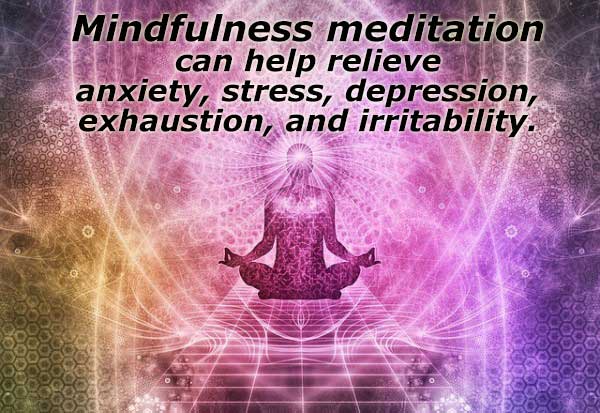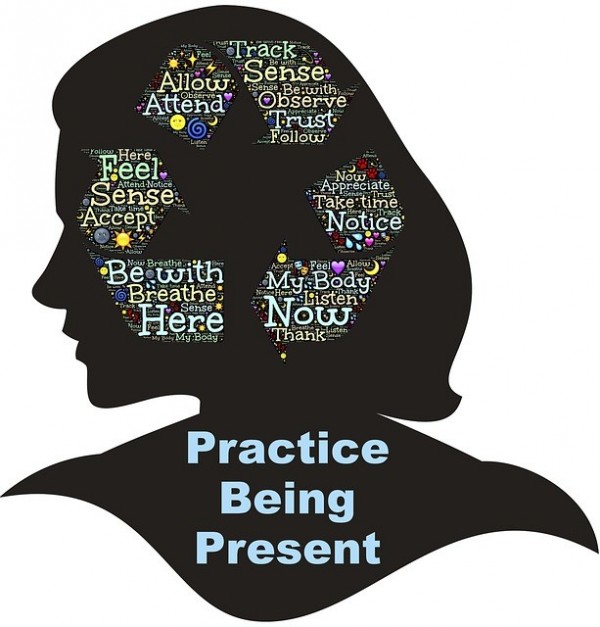
 The ultimate goal of meditation is to gain better control of your thoughts in order to experience peace, happiness, and joy, our fundamental nature.
The ultimate goal of meditation is to gain better control of your thoughts in order to experience peace, happiness, and joy, our fundamental nature.
Meditation is not a part of any religion; it is a science, which means that the process of meditation follows a particular order, has definite principles, and produces verifiable results. (Yoga International, 2013)
In meditation, the mind is clear, relaxed, and inwardly focused. When you meditate, you are fully awake and alert, but your mind is not focused on the external world or on the events taking place around you. (Yoga International, 2013) Meditation requires focus and concentration so that your mind is silent, and the fewer thoughts you have the deeper you will meditate. Meditation is the only method that allows you to gain control over your whole mind. We are taught all our lives to examine our outer world, but never taught how to examine the inner world that exists within ourselves. That’s what meditation does.
When you have severe chronic pain you probably want to do anything to stop the pain. But, you find moving hurts, ignoring it hurts, doing nothing hurts. However, the physical pain is not the only pain you face. Your mind can start to suffer too, with concerns on whether the pain will get worse or possibly never go away. And those thoughts could actually make you r suffering worse.
r suffering worse.
Stress is actually one of the reasons for increased pain. Stress causes your nervous system to be aroused which aggravates pain and is then another stressor. Meditation helps to reduce stress, therefore reducing pain in the body.
Latest medical advances show it can be more powerful to explore the sensations of pain and illness in your body than the most commonly prescribed medical painkillers. This is the focus behind an ancient form of meditation called “mindfulness.”
The Power of Mindfulness
The mind will zoom in on your pain for a closer look to find a solution, which actually increases your pain. It will also draw on past, similar pain experiences causing even more pain. The longer you have been in pain, the more painful memories the mind will draw from. This pain, stress, and fear can actually impair healing and cause a vicious cycle of suffering. Imaging studies show that mindfulness soothes the brain patterns underlying pain and, over time, these changes take root and alter the structure of the brain itself, so that patients no longer feel pain with the same intensity. (Psychology Today, 2015) Many say that they barely notice it at all.
Meditation teaches you how to focus in on painful sensations and let go of your struggle with them. Then, your pain starts to magically melt away. This comes with the realization that there are two forms of pain primary pain and secondary pain. Primary pain is the pain from illness, injury, or damage to the body or nervous system. Secondary pain is the mind’s reaction to primary pain which is often longer lasting and more intense. (Psychology Today, 2015)
 This is the pain you can gain control over. You can actually see the process of mindfulness meditation reducing secondary pain on a brain scanner.
This is the pain you can gain control over. You can actually see the process of mindfulness meditation reducing secondary pain on a brain scanner.
Mindfulness meditation is also very powerful because it’s something you do for yourself vs. something that is done for you such as pain medications or surgical procedures.
Mindfulness meditation has been shown in clinical trials to reduce chronic pain by 57 percent. Well accomplished meditators are able to reduce pain by over 90 percent.
(Psychology Today, 2015)
Mindfulness is all about listening to pain, starting to understand it, accepting it, and healing in the process.
Mindfulness is not only useful while meditating. It can be practiced outside of meditating too, and have a lot of the same benefits. It can create changes in how you perceive things, with the realization that your thoughts are not your reality. Mindfulness can be practiced while walking, while doing chores, during your morning routine, and many other areas of your life. It’s all about solely focusing your thoughts on only the activity you are doing, stopping your mind from wandering.
Improving Pain from Diseases
Mindfulness meditation can help just about anyone. Hospital pain clinics currently prescribe mindfulness meditation to help relieve some of the suffering that comes from numerous diseases such as cancer (and the side effects of chemotherapy), arthritis, diabetes and heart disease. Meditation can also help with chronic fatigue, multiple sclerosis, fibromyalgia, coeliac disease, back problems, irritable bowel syndrome and migraines.
Mental Health Benefits
 Mindfulness meditation can help relieve anxiety, stress, depression, exhaustion, and irritability. It can also help improve memories, increase reaction times, and boost mental and physical stamina. People who regularly meditation are often happier and more content with life.
Mindfulness meditation can help relieve anxiety, stress, depression, exhaustion, and irritability. It can also help improve memories, increase reaction times, and boost mental and physical stamina. People who regularly meditation are often happier and more content with life.
Physical Health Benefits
Other physical health benefits gained from meditation include; lowering blood pressure, improving blood circulation, lowering heart rate, slower respiratory rate, and lowering blood cortisol levels.
 Then, you can slowly increase to longer periods of time as you get used to it. You can meditate in the morning, during a lunch break, or any other time of day. Many meditation techniques exist, but there are some basic principles for beginners.
Then, you can slowly increase to longer periods of time as you get used to it. You can meditate in the morning, during a lunch break, or any other time of day. Many meditation techniques exist, but there are some basic principles for beginners.
Where to Start
To start meditating sit or lie down comfortably in a quiet space and close your eyes. Then, work on breathing through your stomach, as opposed to your chest.
Concentration Meditation
The easiest way to begin meditating is to concentrate on your breath. Pay attention to how your body moves as you naturally inhale and exhale. Observe your chest, shoulders, rib cage, and stomach. Listen to the sound of your breathing and clear your mind from thinking about anything else. When random thoughts enter your mind let them go and focus back on your breathing. It’s okay for your mind to wander, you don’t have to clear your mind or stop all thoughts to do meditation successfully, instead you just want to practice on refocusing your attention. It’s normal for the mind to resist. If you are having trouble concentrating, you can count your breaths till you reach 10 and then start again at one. This process will improve concentration.
Mindfulness Meditation
 With Mindfulness meditation you want to observe your thoughts as they enter your mind without getting involved in them and judging them. This helps you to learn how your mind works and see how your thoughts and feelings have patterns. Over time, you will notice the tendency that your mind has to judge an experience as good or bad, pleasant or unpleasant. As you get to know how your mind works, don’t criticize yourself, being friendly toward yourself. Eventually, an inner balance will develop.
With Mindfulness meditation you want to observe your thoughts as they enter your mind without getting involved in them and judging them. This helps you to learn how your mind works and see how your thoughts and feelings have patterns. Over time, you will notice the tendency that your mind has to judge an experience as good or bad, pleasant or unpleasant. As you get to know how your mind works, don’t criticize yourself, being friendly toward yourself. Eventually, an inner balance will develop.
Body Scan
Once you have been practicing meditation for at least a week, you can focus on parts of your body thinking about how they feel, moving them, and relaxing them one at a time. Relieve any tension you feel in each part of your body. Start with your feet and move all the way up to your head.
It is Not Possible to Meditate and Not Receive Benefits
You might not notice the benefits right away, but the results are stored in your unconscious and in time you will see them. Be patient and persistent. Changes will happen gradually over time. Changes often are not dramatic or easily observed. Meditation may not always feel peaceful, but it has truly amazing benefits.
The Power of Meditation
One research study showed a well-practiced meditator was able to actually stop his heart. Researchers haven’t found any meditators able to do the same, but some have slowed their heart rate and even respiration rate while meditating.
Penman Ph.d., Danny. (2015 January 9th). Psychology Today/Can Mindfulness Meditation Actually Really Reduce Pain and Suffering? Retrieved from:
Burke, Stephanie. (2016 November 11th). SPINE-Health/Mindful Meditation vs. Chronic Pain Retrieved from:
https://www.spine-health.com/blog/mindful-meditation-vs-chronic-pain
Babauta, Leo. (2016 January 15th). zen habits: Breathe/Meditation for Beginners: 20 Practical Tips for Understanding the Mind. Retrieved from:
https://zenhabits.net/meditation-guide/
Rama, Swami. (2013 June 3rd). Yoga International/The Real Meaning of Meditation. Retrieved from:
https://yogainternational.com/article/view/the-real-meaning-of-meditation
Steiner, Brian. (2014 April 1st) The Atlantic/Treating Chronic Pain with Meditation Retrieved from:
https://www.theatlantic.com/health/archive/2014/04/treating-chronic-pain-with-meditation/284182/
